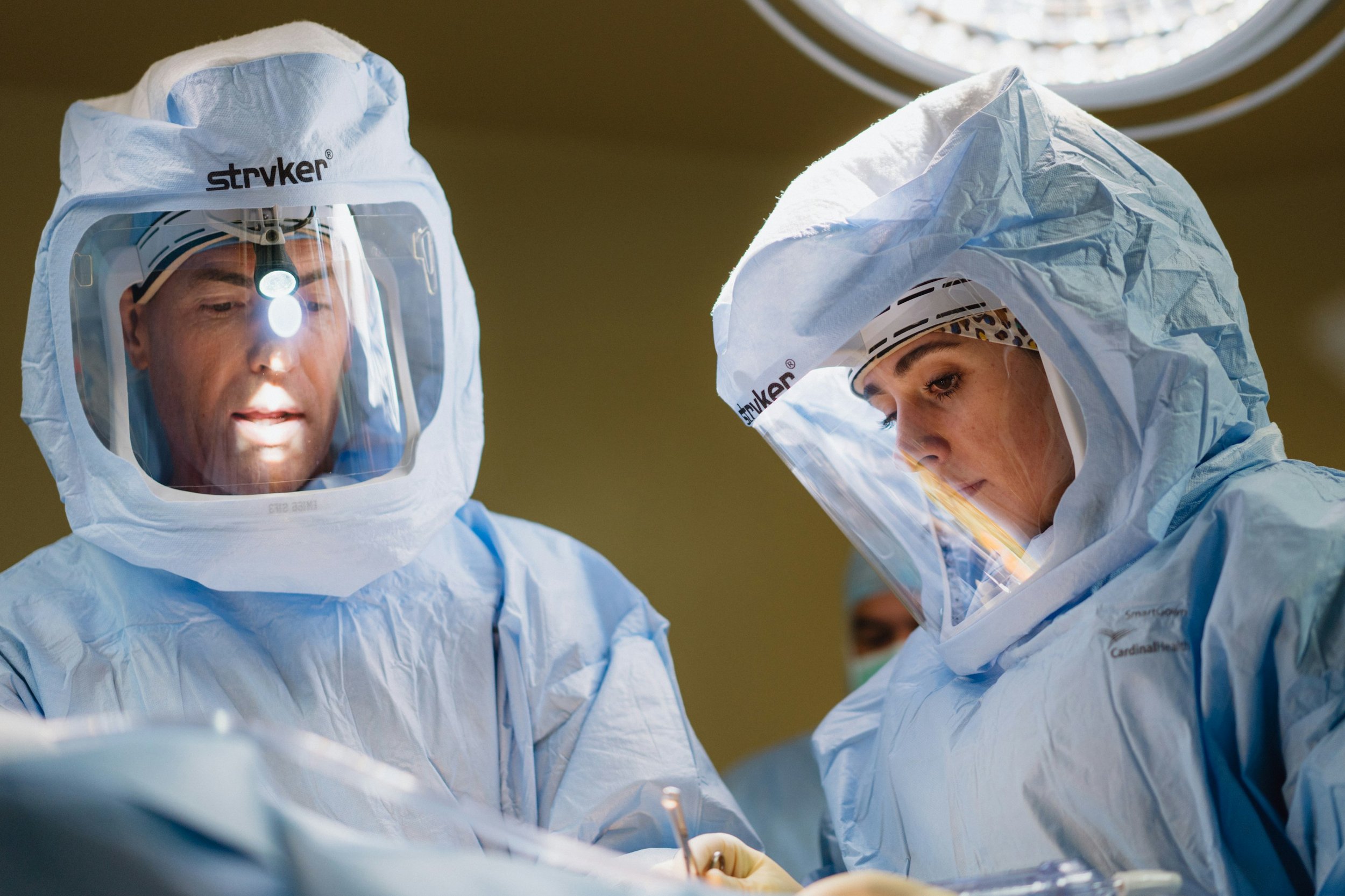
Knee Dislocation Specialist & Treatment in San Antonio
Knee vs. Patellar Dislocations: Key Differences
When it comes to knee injuries, it's important to understand the difference between a knee dislocation and a patellar dislocation, as they involve different parts of the joint and vary in severity.
A patellar dislocation, often called a dislocated kneecap, happens when the kneecap slips out of its normal position in the groove of the femur. Since the patella helps stabilize the knee, its displacement can lead to pain, swelling, and limited mobility. While uncomfortable, this type of injury is usually less severe and can often be treated with immobilization, physical therapy, or in some cases, surgery.
A knee dislocation, on the other hand, is a much more serious injury. It occurs when the thigh bone (femur) and shin bone (tibia) are forced out of alignment. This is a medical emergency that requires immediate attention to prevent serious complications. Treatment may involve surgery and a longer rehabilitation process. In some cases, a dislocated knee can lead to compartment syndrome, a dangerous condition caused by increased pressure in the leg muscles, which can affect blood flow and damage tissue.
In short, a dislocated kneecap typically involves less structural damage and is easier to manage, while a full knee dislocation demands urgent orthopedic care. Knowing the difference between the two can help guide accurate diagnosis, effective treatment, and better injury prevention.
Symptoms of a Dislocated Knee
Severe knee pain that begins immediately after the injury
Visible deformity or misalignment of the knee joint
Swelling and bruising that develop quickly around the knee
Inability to move the knee or support weight on the affected leg
Numbness or weakness in the foot, which may suggest nerve involvement or vascular injury
Patellar Dislocations Symptoms
Sudden, sharp pain at the front of the knee at the time of injury
Swelling and tenderness surrounding the kneecap
A noticeable lump or bulge on the side of the knee, where the kneecap has shifted out of place
Difficulty bending or straightening the knee after the injury
A feeling of instability or the knee giving out when trying to stand or walk
What Is a Knee Dislocation?
A dislocated knee is a serious orthopedic injury that happens when the thigh bone (femur) and shin bone (tibia) are pushed out of their normal alignment. This type of injury is often caused by high-impact trauma, such as a fall, a sports-related collision, or a car accident. The result is sudden, intense knee pain, rapid swelling, and a noticeable deformity around the joint. Many patients are unable to move or bear weight on the leg immediately after the injury.
During a dislocation, the knee's major ligaments, such as the anterior cruciate ligament (ACL), posterior cruciate ligament (PCL), medial collateral ligament (MCL), and lateral collateral ligament (LCL), can be stretched or torn. In more severe cases, surrounding blood vessels and nerves may also be damaged, increasing the risk of complications.
Prompt medical attention is critical. Early diagnosis helps determine the extent of the injury and guides the appropriate treatment plan. Without immediate care, a dislocated knee can lead to long-term instability or permanent damage to the joint and nearby structures.
Common Causes and Risk Factors
Knee dislocations are typically caused by sudden, high-impact forces that push the joint out of alignment. This type of injury happens when the femur and tibia are forced apart unnaturally. Common causes include contact sports, traumatic accidents, or falls. Certain risk factors can increase your chances of experiencing a knee dislocation. These include previous ligament injuries, joint hypermobility, and conditions like obesity, which put extra strain on the knee. If you’ve had past knee injuries or regularly engage in high-intensity physical activity, you may be more vulnerable to both patellar dislocations and full knee joint dislocations. Being aware of these risks can help you take preventive steps, whether it’s bracing during sports, strengthening surrounding muscles, or seeking orthopedic guidance for chronic instability.
Below are some of the causes and situations that can lead to dislocations of knees:
High-Velocity Impacts
Automotive Collisions: The intense force from vehicle collisions stands as a predominant cause, where the direct or indirect impact can forcefully dislodge the knee joint.
Falls: Specifically, those from considerable heights, directly impact the knee's structural integrity, pushing the bones out of alignment under the body's weight.
Sports-Related Injuries
Impact and Contact Sports: Playing sports like football, basketball, or soccer increases the risk of traumatic knee dislocations, especially in younger athletes.
Dynamic Sports and Activities: Sports that involve quick pivots or agile movements (e.g., tennis, soccer), can predispose athletes to knee injuries, including dislocations.
Accidents and Missteps
Simple actions such as stepping wrongly or tripping can lead to dislocated knees, emphasizing the importance of caution in daily activities.
The risk posed by rapid changes in direction during physical activities highlights the importance of agility training and proper footwear to enhance knee stability.
Pre-existing Conditions
Individuals with ligamentous laxity or prior knee injuries are more susceptible to dislocations, pointing to the value of regular medical check-ups and preventive exercises.

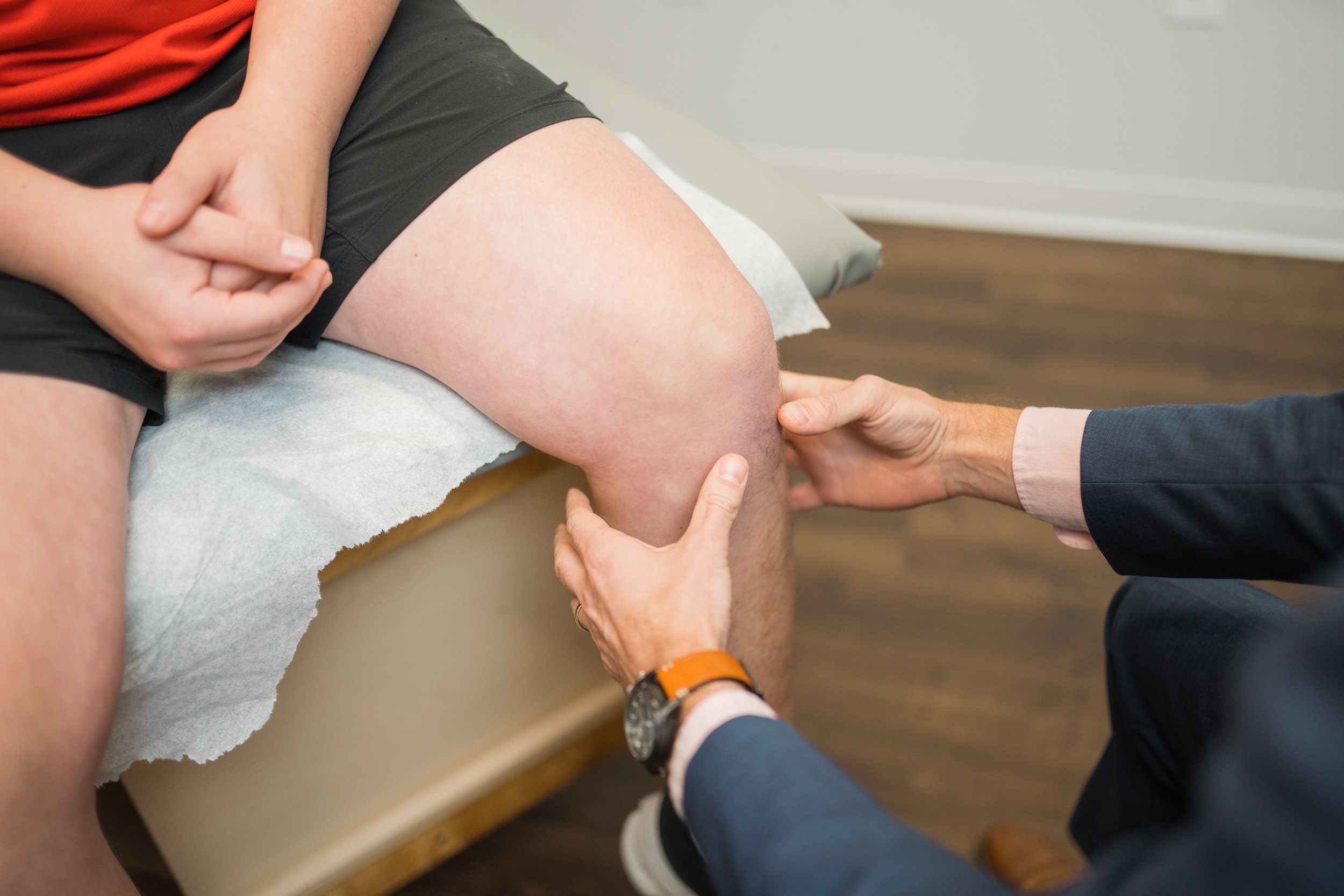

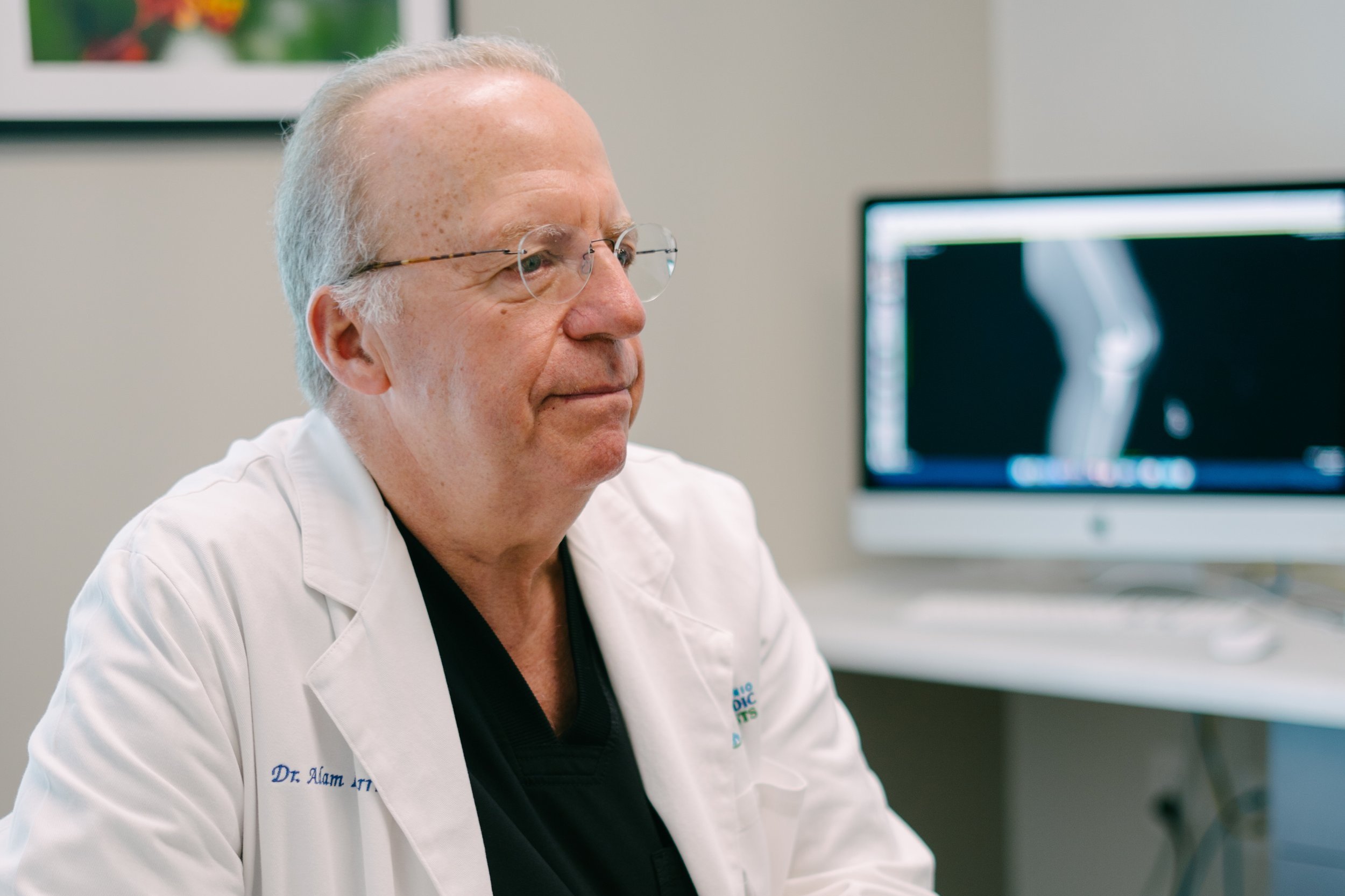
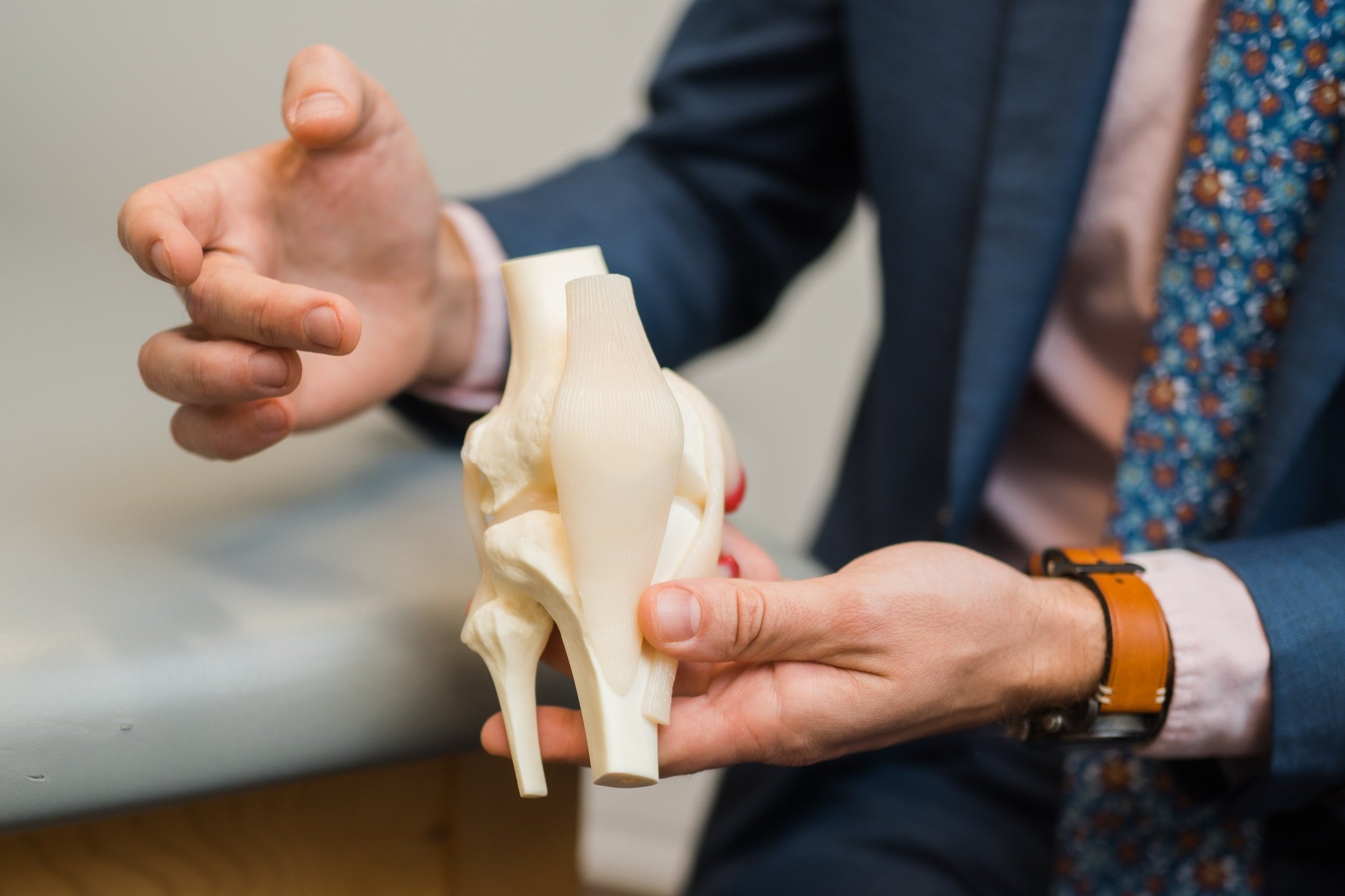
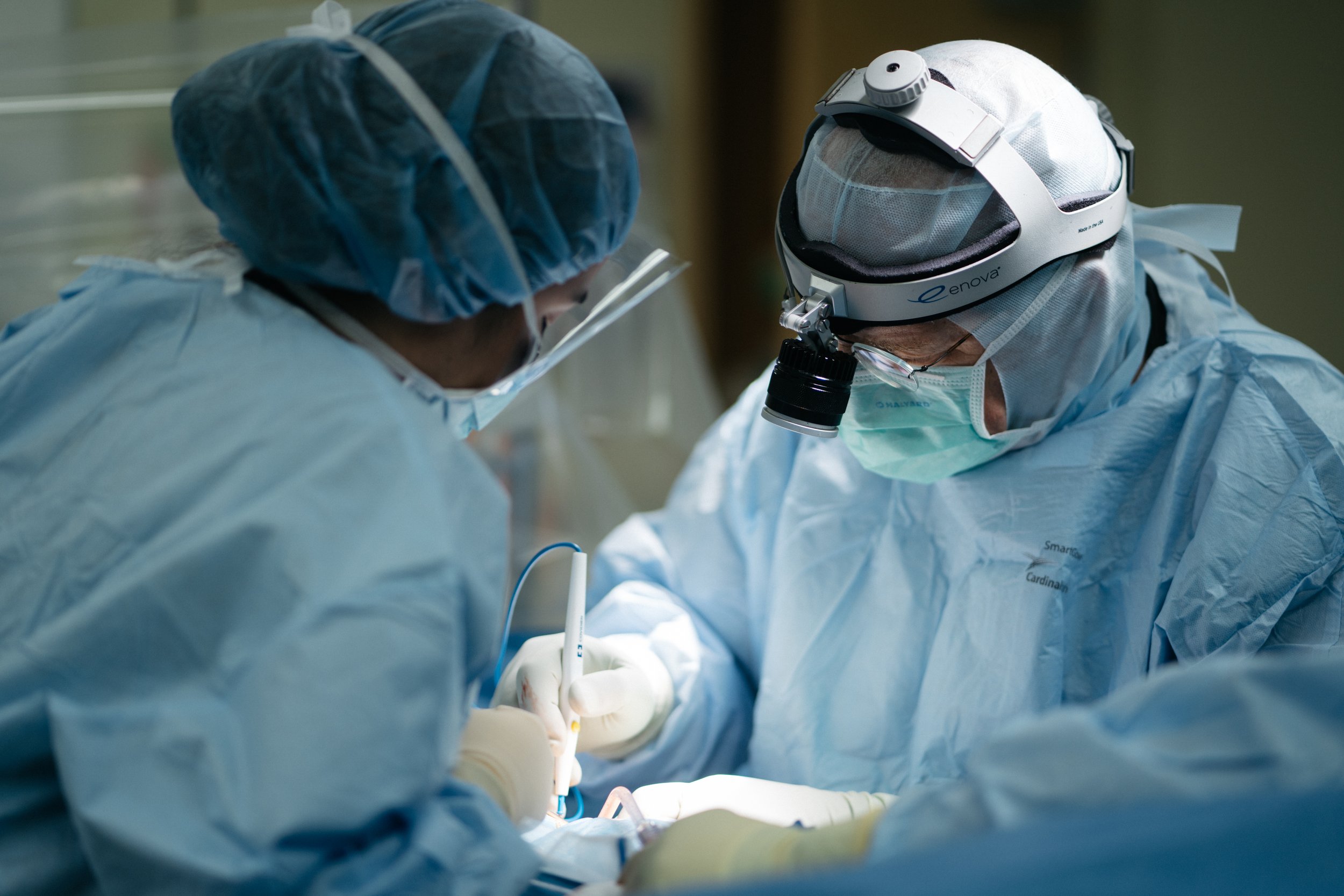

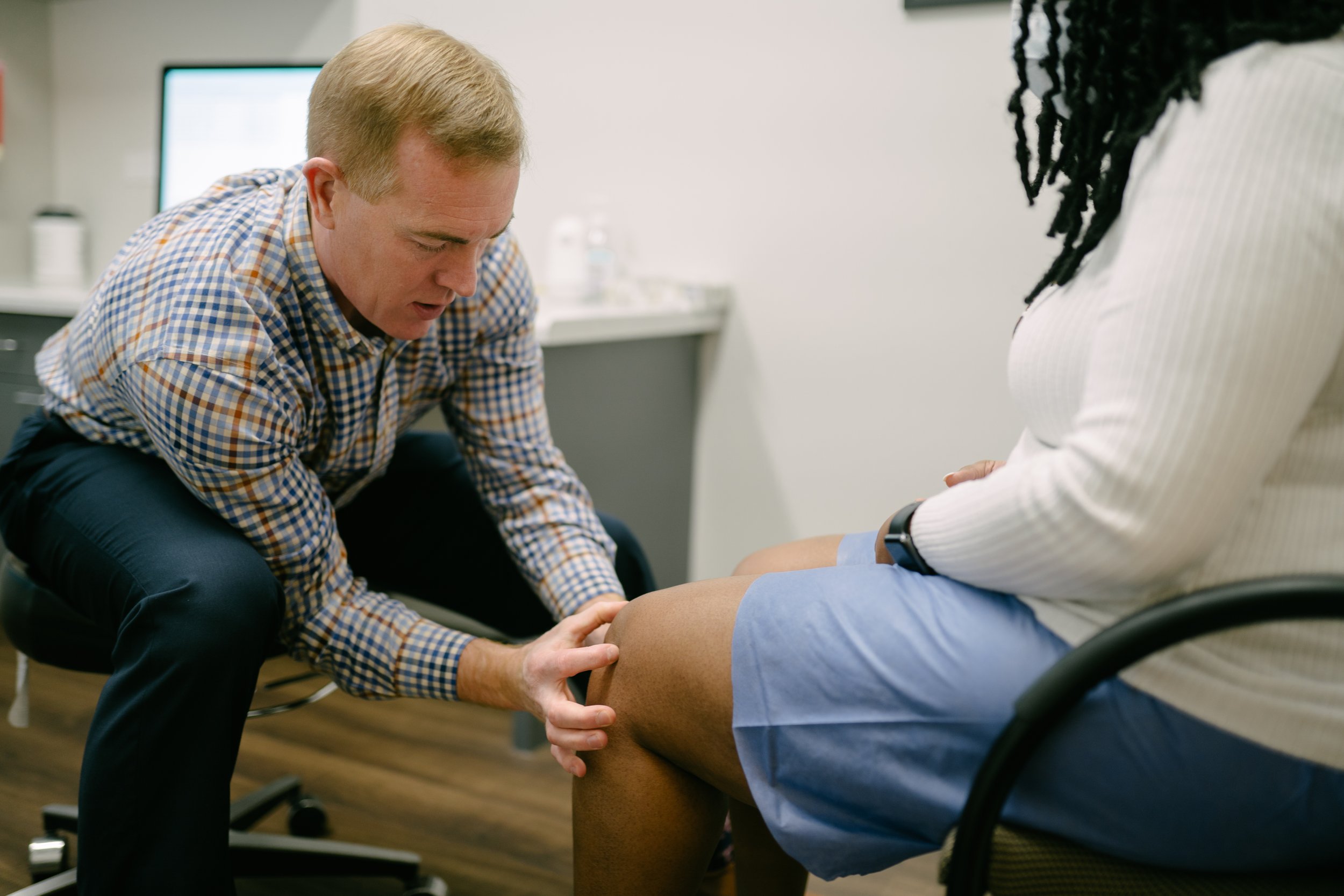
Treatment Options for Knee Dislocations
During your visit, our specialists will begin by examining your knee for signs of instability, swelling, or deformity. When examining your knee after a dislocation, especially following an accident or while playing sports, your physician may order an X-ray or an MRI to evaluate bone alignment and assess ligament damage following a knee dislocation. In severe cases, complications like compartment syndrome may occur, which require immediate medical attention.
1. Non-Surgical Treatment:
Reduction: Immediate manual realignment of the dislocated knee by a healthcare professional, often followed by immobilization.
Immobilization: Use of a brace or splint to keep the knee stable and allow ligaments to heal.
Physical Therapy: After initial healing, targeted exercises help restore strength, flexibility, and range of motion.
2. Surgical Treatment:
Ligament Repair/Reconstruction: Surgery to repair or reconstruct torn ligaments is common, especially if non-surgical treatment fails to stabilize the knee.
Vascular Surgery: In cases where blood flow is compromised, vascular surgery may be necessary to repair damaged vessels.
3. Rehabilitation:
A comprehensive rehabilitation program is critical, often lasting several months, to fully recover knee function and strength.
Knee injuries—especially dislocations—can lead to long-term instability or nerve damage if not treated quickly. Our board-certified orthopaedic specialists in San Antonio offer advanced diagnostics and personalized treatment to help you recover safely.
FAQs about KNee Dislocations
-
If you suspect a knee dislocation, seek emergency medical care right away. Do not try to pop the knee back into place yourself. Avoid putting any weight on the leg and keep it elevated if possible. Applying ice may help reduce swelling while you wait for professional evaluation. Prompt treatment is important to prevent further damage to ligaments, blood vessels, or nerves.
-
Recovery time depends on the severity of the injury and whether surgery is needed. Mild dislocations treated non-surgically may heal in six to eight weeks, while more complex cases involving ligament damage or vascular injury can take several months. Physical therapy plays a major role in regaining strength, stability, and range of motion.
-
Most people are unable to walk immediately after a kneecap dislocation due to pain, swelling, and instability. Attempting to walk could worsen the injury. After the kneecap is realigned and initial healing begins, a doctor or physical therapist will guide you through a safe rehabilitation process, which may include bracing, rest, and a gradual return to walking.
Meet Our Knee Specialists




